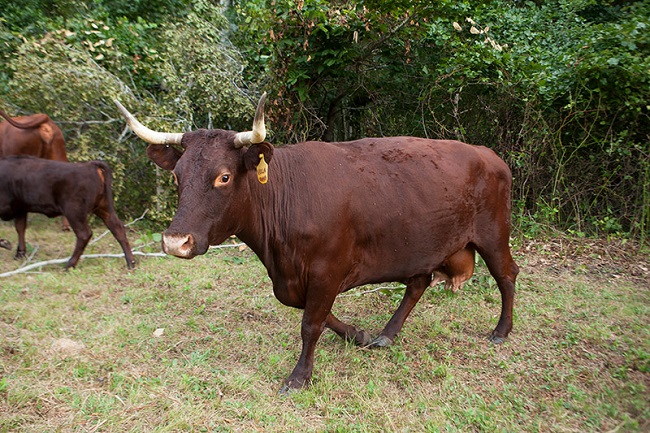Red Cow Breeds, celebrated for their vibrant coloring and diverse characteristics, contribute significantly to the global livestock and dairy industry. From the robust Red Angus to the charmingly flecked Red Poll, red cattle offer a fascinating variety of qualities.
This guide will delve into the details of the most well-known Red Cow Breeds, providing a comprehensive overview of their history, traits, and contributions to farming.

Popular Red Cow Breeds
Red Angus: Originating in Scotland, the Red Angus is revered for its excellent meat quality, easy calving, and adaptability to various climatic conditions.
Red Poll: A dual-purpose breed from England, the Red Poll is esteemed for its high-quality milk and meat, and its distinctive red coat.
Irish Red and White Setter: Indigenous to Ireland, this breed is celebrated for its milk production and calm temperament.
Red Sindhi: This breed from Pakistan is one of the most productive dairy breeds in South Asia, noted for its heat tolerance and high milk yield.
Read Also:
Unique Characteristics and Advantages
Each red cow breed boasts unique characteristics:
Red Angus cows are hardy and adaptable, excelling in various environments.
Red Poll cows are known for their long lifespan and high fertility.
Irish Red and White Setters are praised for their robust health and gentle nature.
Red Sindhi cows are renowned for their heat resistance and abundant milk production.
Raising Red Cows
Red Cow Breeds are generally docile, making them ideal for both novice and experienced farmers. Their red coats are not just aesthetically pleasing, but also advantageous as they’re less prone to heat stress compared to darker breeds.
Adaptability of Red Cow Breeds
Red Cow Breeds are often praised for their adaptability to varying climates and landscapes. For instance, the Red Angus is known to thrive in both hot and cold climates, making them a versatile choice for farmers across the globe.
Understanding the adaptability of each breed can help farmers make informed decisions about which cattle are suitable for their specific farming conditions.
Genetics Behind the Red Coat
The red coloration in these cow breeds is due to a specific genetic trait. Red coat color is a recessive trait, which means a cow must receive the ‘red’ gene from both parents to be red. This knowledge of bovine genetics can be vital for farmers interested in breeding red cattle.
Role in Sustainable Farming
Red Cow Breeds, particularly dual-purpose breeds like the Red Poll, can play a significant role in sustainable farming.
These breeds efficiently convert feed into meat and milk, helping to reduce the environmental impact of cattle farming.
Additionally, their typically robust health can lead to lower veterinary costs and less reliance on medication.
Read Also:
Conclusion
Whether for dairy, meat, or simply as farm companions, Red Cow Breeds offer an array of benefits. Their resilience, productivity, and adaptability make them a valuable asset to any farming operation.
While each breed has its unique qualities, all share an enchanting red hue that adds a touch of color to pastures worldwide. As we continue to appreciate these Red Cow Breeds, we ensure their contributions to farming endure for generations to come.
























